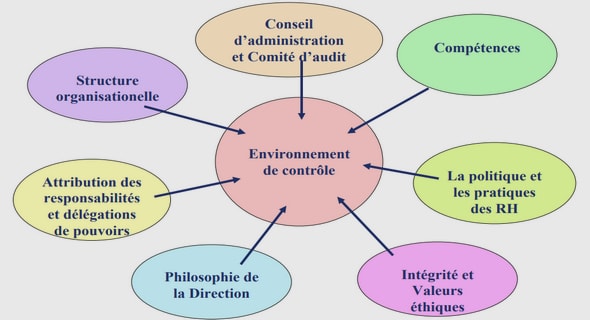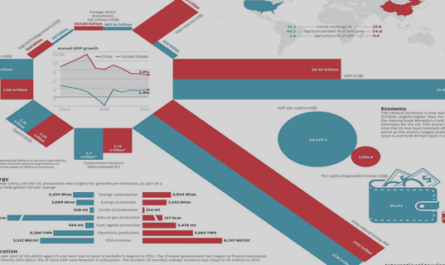Get Complete Project Material File(s) Now! »
Literature Review
In this chapter, previous theories and models regarding e-commerce, 3PL, logistics and supply chain management, organizational learning, and relational benefits are present-ed. The authors of this thesis intend to demonstrate the previous literatures and use such knowledge to form the theoretical framework for later analysis.
E-commerce
The concept of e-commerce
The highly advanced technology that appears in the Internet nowadays is amazing and the rapidity of its acceptance is remarkable. It is such a powerful tool that has changed how firms conduct businesses since it provides unlimited options and opportunities for both companies and customers (Markellou, Rigou & Sirmakessis, 2006). The rapid de-velopment and adoption of Internet has introduced the concept of “electronic commerce” or “electronic business” to market transactions (Cho, et al., 2008). E-commerce can be defined from four perspectives according to Kalakota and Whinston (1997):
- “Communication perspective- e-commerce is the deliverer of information, prod-ucts/services or payments over telephone lines, computer networks or any other electronic means;
- Business process perspective- e-commerce is the application of technology to-wards the automation of business transactions and work flows;
- Service perspective- e-commerce is a tool that addresses the desire of firms, consumers and management to cut service costs while improving the quality of goods and increasing the speed of service delivery;
- Online perspective- e-commerce provides the capacity to buy and sell products and information on the Internet as well as other online services” (cited in Gun-asekaran, Marri, McGaughey & Nebhwani, 2002).
E-commerce refers to the transaction of goods and services through electronic commu-nications (Tian & Stewart, 2006). It involves trading goods and services within an elec-tronic marketplace as well as servicing customers, collaborating with business partners, and conducting electronic transactions within an organization (Toland, 2006). There are two basic type of e-commerce: business-to-business (B2B ) and business-to-consumer (B2C). B2B e-commerce refers to the sale of products and/or services, or information exchange among two or more businesses through electronic technology, usually with the use of Internet, in a public or private exchange (Mockler, Dologite & Gartenfeld, 2006). In B2C, companies sell products and services directly to consumers. Even though general public is more familiar with B2C, B2B is the form that in fact dominates e-commerce in terms of revenue (Tian & Stewart, 2006).
E-commerce was once treated as an expressway to wealth, however it has actually changed the way people conduct business (Tian & Stewart, 2006). It is noticeable that one of the most distinctive characteristics between e-commerce and traditional media relates to the relatively easier global market reach that is enabled on Internet. The ad-vance technologies of Internet fostered direct, fast and flexible communication between producers, suppliers, and customers across countries (Egea & Menéndez, 2006). More-over, e-commerce has the potential advantage of lower costs, higher efficiency, and un-limited reach which leads firms and organizations making great efforts to exploit electronic channels to reach customers and create new business opportunities (Su & Chuang, 2011; Lepouras & Vassilakis, 2006)
E-commerce order fulfilment
Chen and Chang (2003) have presented a descriptive model of online shopping process as shown below
As we can see from figure 1 that once a potential customer became a purchaser, the or-der fulfilment and service will ultimately affect his/her post-purchase satisfaction, which in turn determine whether the customer will come back again or not. In this thesis, the authors are focusing on the logistic collaboration that takes place at the order fulfil-ment stage. The concept “e-fulfilment” which refers to e-commerce order fulfilment is introduced here.
Agatz, Fleischmann and Nunen (2008) define e-fulfilment as the collection of purchas-ing, warehousing, delivery and sales.
- Purchasing: refers to all supply processes, i.e. ordering of final products;
- Warehousing: refers to the storage and handling function;
- Delivery: refers to activities that physically move the product to the customer;
- Sales: refers to all processes that directly interface with customer demand, e.g. pric-ing, order forecasting (Agatz, et al., 2008).
Moreover, Agatz et al. (2008) have identified several issues within e-fulfilment as shown in table 1.
The issues that have been identified above were originally in a multi-channel distribu-tion setting. However the case in this thesis can still fit in this scenario since AliExpress is composed by a lot of small sellers with both B2B and B2C businesses that complicat-ed the e-fulfilment process. These issues are most likely to be present in e-fulfilment practices and e-commerce companies needs to deal with some if not all of them. In or-der to conduct excellent e-fulfilment to increase the post-delivery satisfaction, some re-quirements in the operational aspect should be classified. According to Tarn, Razi, Wen and Perez Jr (2003), three key operational areas have been identified for e-fulfilment based on the nature of e-business.
- “Fulfilment centre: an e-fulfilment operation including e-fulfilment processes and their components consists of slotting (storage), picking, sorting, packaging and de-livery processes.
- Infostructure: is defined as the collaborative network capable of processing Internet orders and exchanging information via LAN/WAN across multi-platform infor-mation systems of business partners. Data capture and supply chain application sys-tems are integral part of the infostructure.
- Reverse logistics: an e-fulfilment operation’s job is not over with the picking and ship-ping of products to the customer” (Tarn, et al., 2003)
It is vital to understand that the fulfilment centre and infrastructure must be supported by a robust and reliable warehouse management system (WMS) (Tarn, et al., 2003). Moreover, real-time information exchange including the ability to track shipped product on 3PL part-ners’ systems can be achieved with a comprehensive system consisting of WMS, enterprise resource planning (ERP) and supply chain management (SCM) (Tarn, et al., 2003). Howev-er, an over costly e-fulfilment process with such heavy investment will drop the profit sub-stantially, and the excessive e-fulfilment costs will increase the maintenance price in the future as well (Lummus & Vokurka, 2002). Thus e-commerce companies should evaluate the following e-fulfilment options before making any huge investments:
- “Distribute from an existing distribution centre
- Acquire a dedicated e-fulfilment centre
- Use a third-party e-fulfilment service provider
- Ship direct from the supplier to the custome
- Pick and ship from existing retail stores
- Ship to a local store or central pickup point” (Lummus & Vokurka, 2002)
Third-party logistics (3PL)
Concept of 3PL
Taking a broad view, Coyle, Bardi, & Langley Jr. (1996) defined 3PL as an external or-ganization performs part of or all of the logistics functions of a company. Similarly, Lieb (1992, p.29) defines 3PL as “the use of external companies to perform logistics functions that have traditionally been performed within an organization”. Laarhoven, Berglund, & Peters (2000) view 3PL as contract-based activities performed by logistic service providers including the management of transportation and warehousing.
Other definitions have been focusing on the distinctive functions and organizational fea-tures of the relationships between 3PL and the company. Bagchi and Virum (1998) de-fine 3PL as a logistic alliance tights the connection between customers and providers, and fulfils several logistic needs. Bask & Anu (2001) also suggests that besides the ful-filment of logistic needs, business-to-business relationships should also be included in 3PL’s main focuses.
3PL services
Different 3PL providers have their different categorization standards in terms of 3PL services they offer. According to Khurana (2012), there are four types of 3PL logistic services. A full service 3PL should include supply chain management, warehousing, consolidation service and order fulfilment:
Supply chain management: Khurana (2012) indicates that “A well-oiled supply chain is at the heart of a successful ecommerce business. So if your inbound freight delivery re-quirements are taken care of, then the 3PL has done a good job”.
Warehousing: In this case, 3PL will specifically focus on the warehousing requirements. The investment stresses on space and technology management, in order to run a ware-house efficiently and effectively. Cost-efficiency is also included in some circumstances.
Consolidation service: E-commerce merchants often meet the situation where various small products should be sent to the same location. This is the situation when consolida-tion should be applied. Small goods can be consolidated into one shipment to save the shipping cost. As Khurana (2012) has referred, “A service provider sending several small packages as one large package is referred to as a consolidation service, also known as freight consolidation or cargo consolidation. It is one of the many services provided by a third party logistics provider”.
Order fulfilment: The main task of e-commerce business is actually the fulfilment of the order. 3PL in this case should provide services that enable the products to reach the customers on the right time, in good condition and at the right place. Order fulfilment is critical when evaluating the 3PL performances.
Vaidyanathan (2005) categorized 3PL services into four groups. Apart from Khurana, he indicates that there are four groups of 3PL services, which are inventory and logistics management, customer service, warehousing and transportation.
1 Introduction
1.1 Background
1.2 Problem discussion
1.3 Research questions
1.4 Purpose
1.5 Perspective
1.6 Delimitation
1.7 Disposition of the thesis
2 Literature Review
2.1 E-commerce
2.2 Third-party logistics (3PL)
2.3 Logistics and supply chain management
2.4 Effects of organizational learning in 3PL
2.5 Relational benefit model in 3PL relationship
2.6 Theoretical framework summary
3 Method
3.1 Research purpose
3.2 Research approach
3.3 Research strategy
3.4 Choice of research method
3.5 Data collection
3.6 Qualitative data analysis
3.7 Time horizons
3.8 Limitations
3.9 Research credibility
4 Empirical Findings
4.1 Case background and introduction
4.2 Logistic service development
4.3 Benefits of the development
5 Analysis
5.1 Analysis regarding research question one
5.2 Analysis regarding research question two
6 Conclusion
7 Reference List
8 Appendix
GET THE COMPLETE PROJECT


